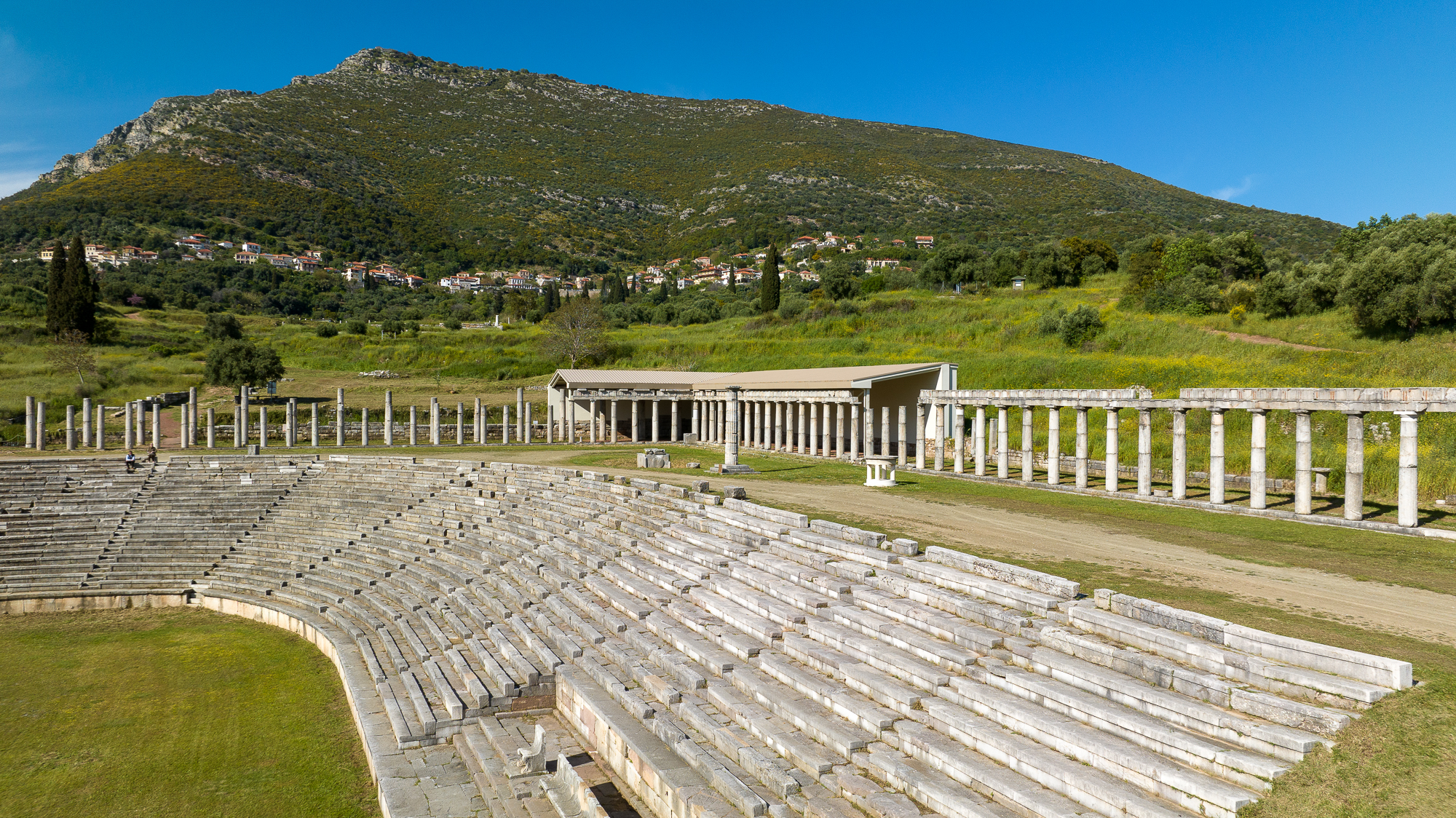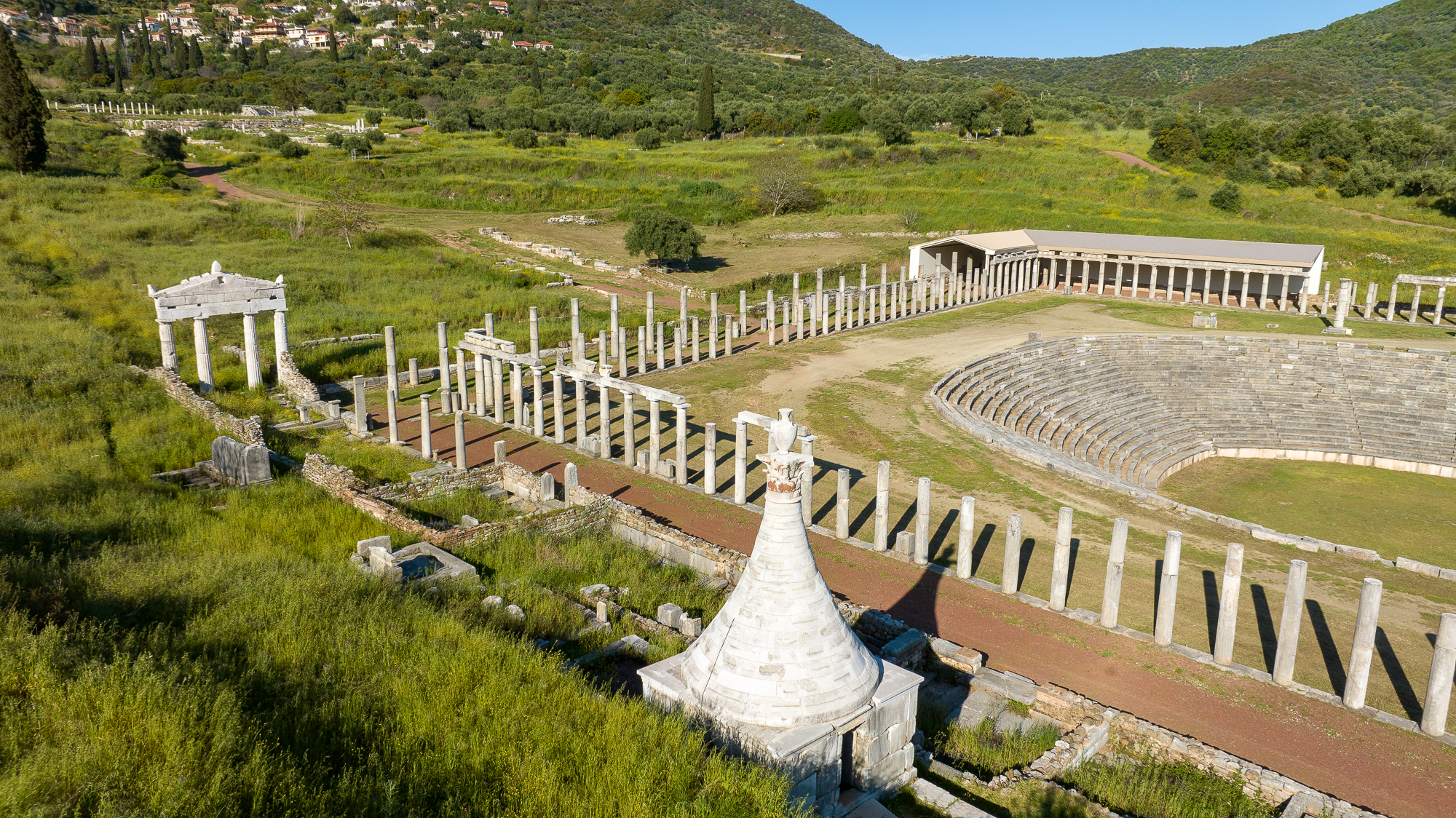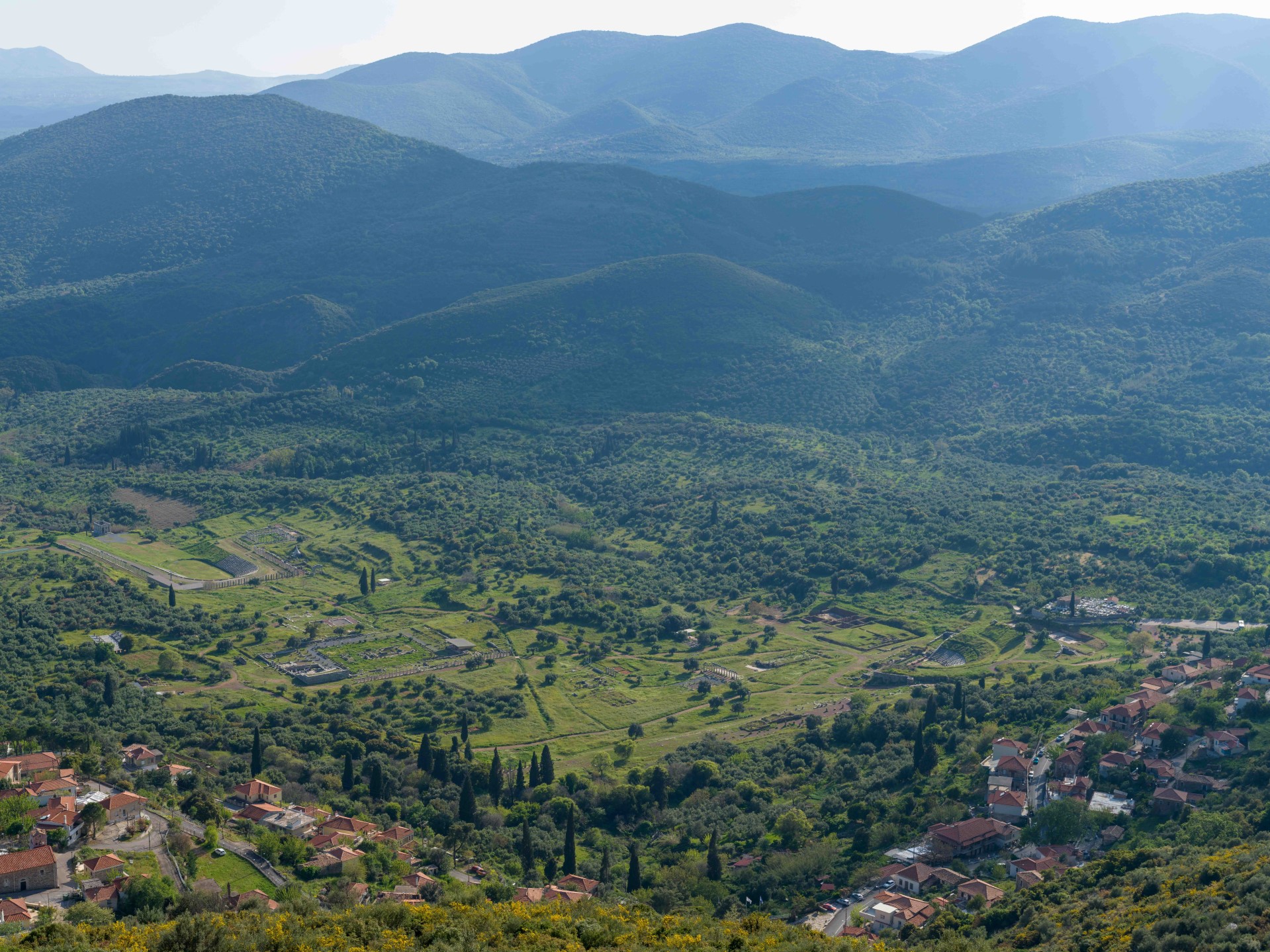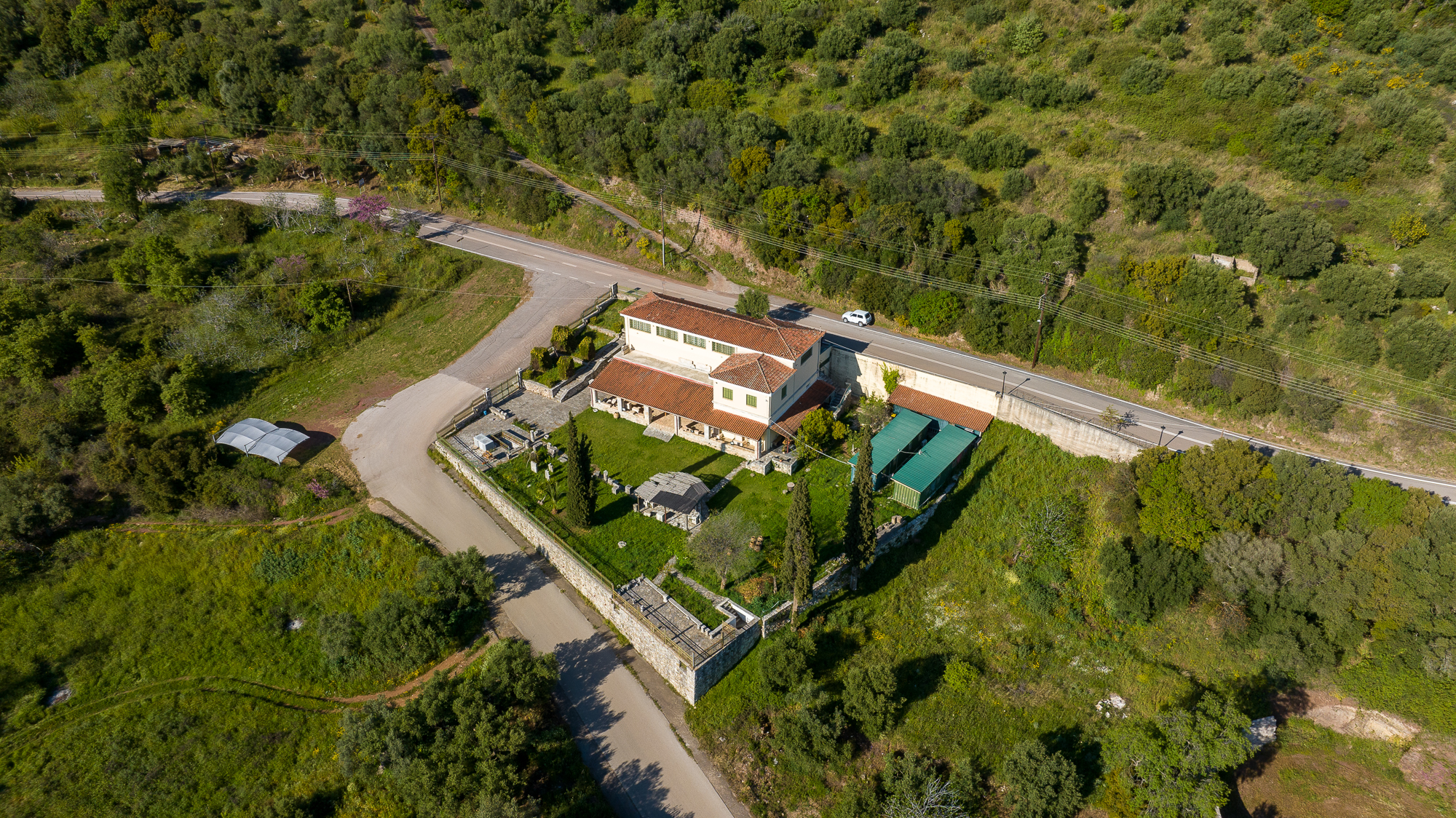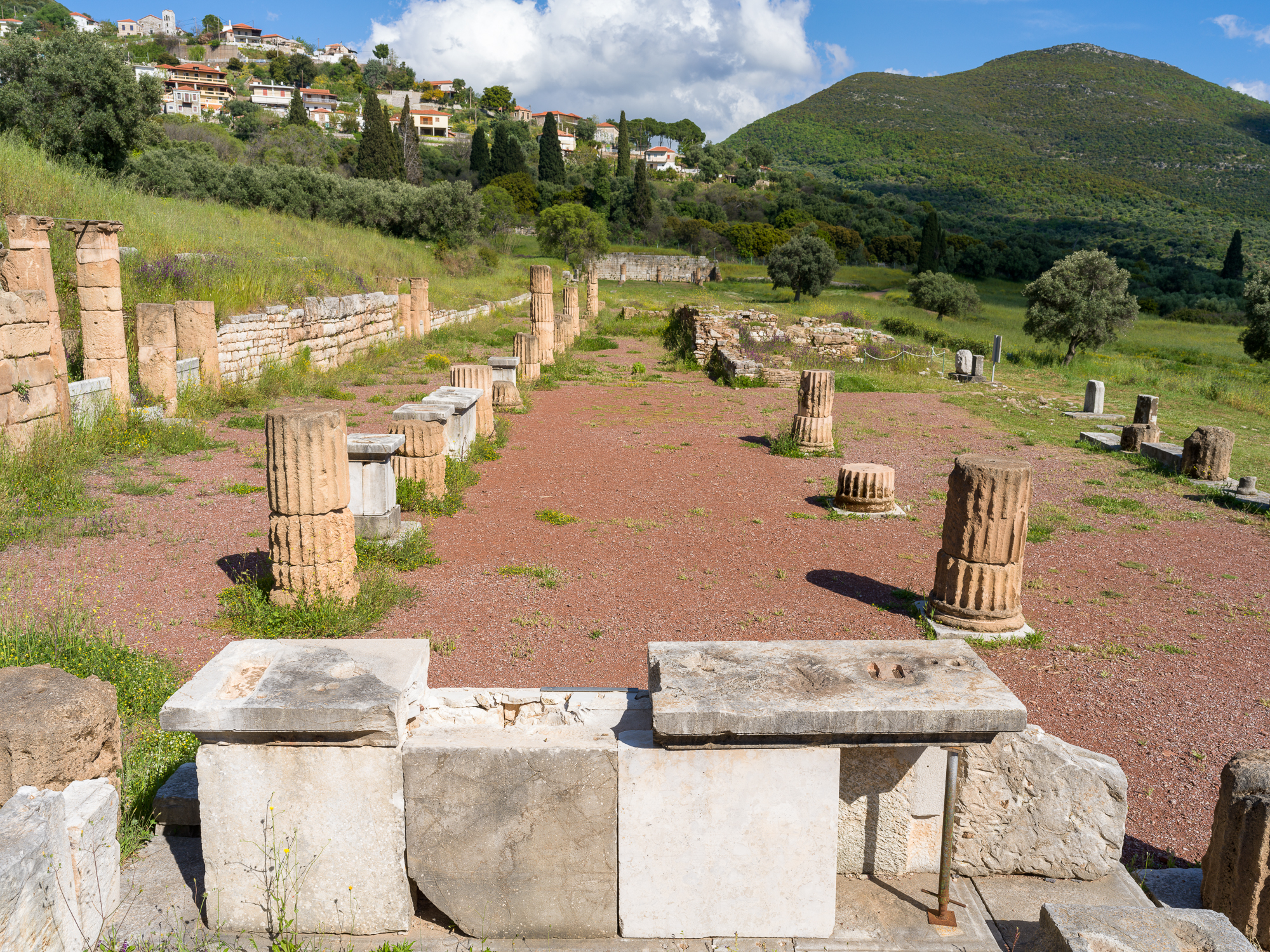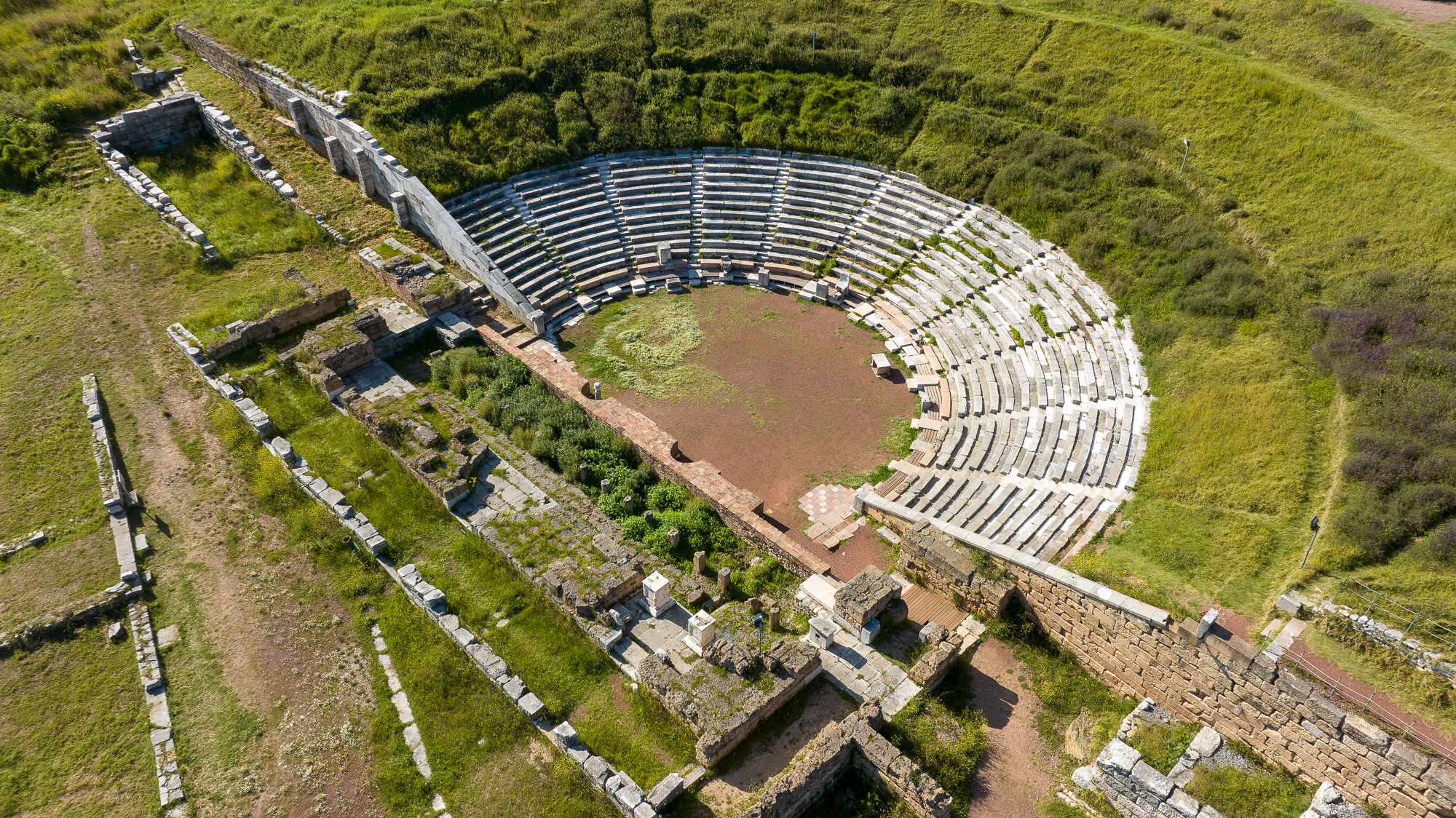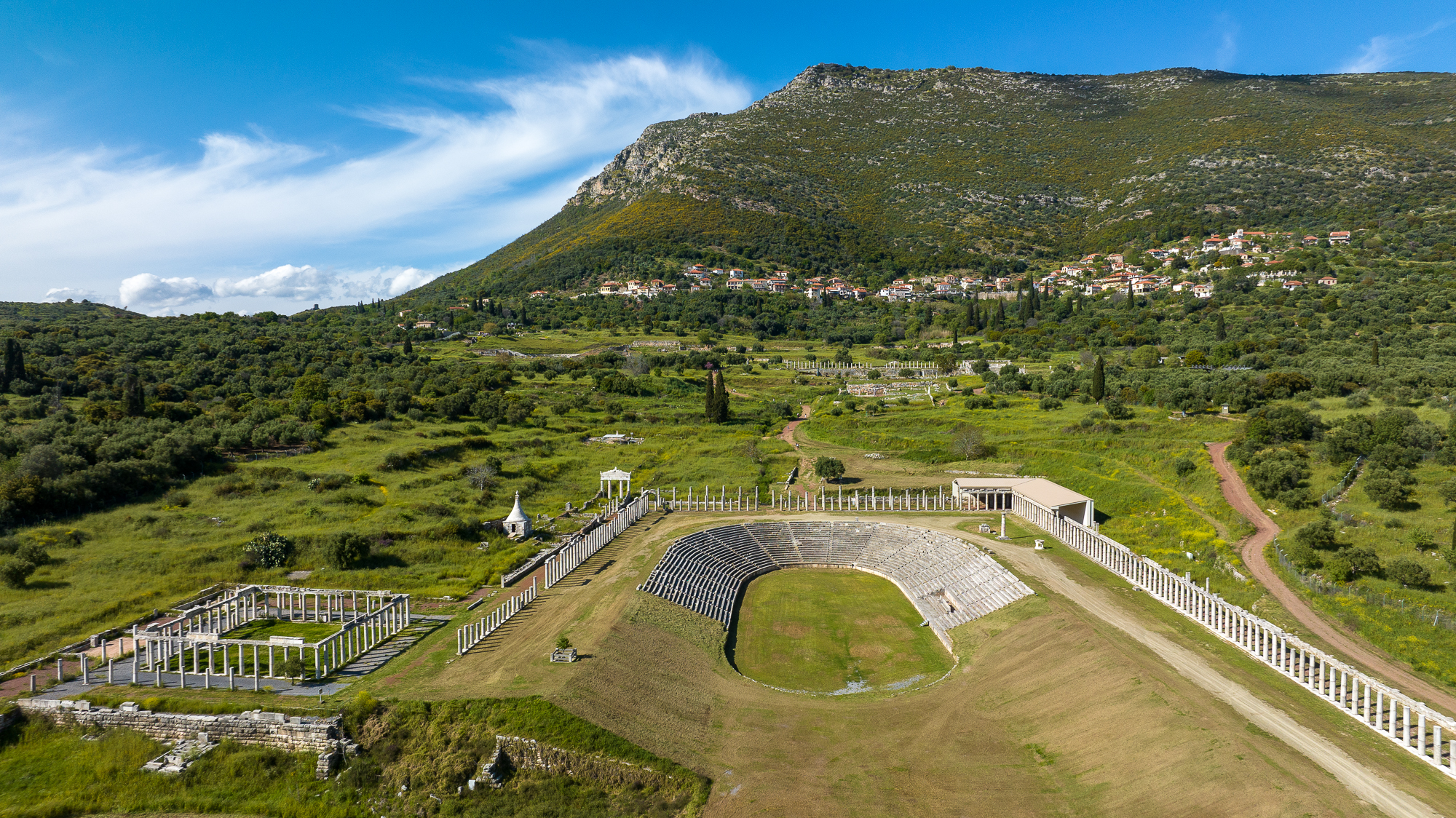
Gymnasium and Stadium, Ancient Messene

The imposing building complex of the Gymnasium-Stadium was constructed near the southern wall of the city during the Hellenistic and late Roman times (3rd century BC – 4th century AD). To the west, a wide vertical street led from the Asklepieion to the monumental Propylon of the Gymnasium. Three doric stoas and the Palestra surrounded the stadium. Marble statues of gods and heroes as well as bronze statues of gymnasiarchs, benefactors of the city and intellectual men adorned the complex.
The precinct of Herakles and the pedestal of the Theseus statue behind the west stoa coexisted with the facilities for physical exercise and spiritual cultivation and with funerary monuments of special architectural form dedicated to distinguished personalities and aristocratic families of the city, who were honoured as heroes. In the west wing, the Palestra with its bath, the Doric propylon of the Gymnasium and the funerary monument K3 with its unusual conical roof stand out. Immediately south of the stadium, the Mausoleum of the Saithidai family dominates, in the form of a doric temple with four columns in the front. On the eastern side of the stadium is the monument of the shields in honour of those who died in battle as well as the doric column which would support a statue on its capital, probably of Aristomenes. Among monuments for gods, heroes and the dead, the Messenian Ephebes (young men) served their three-year term, gradually preparing for their initiation into the ranks of virtuous men.

